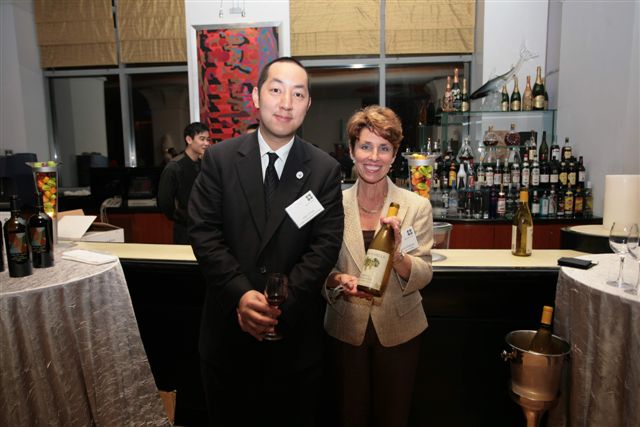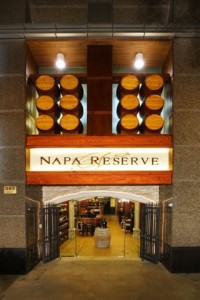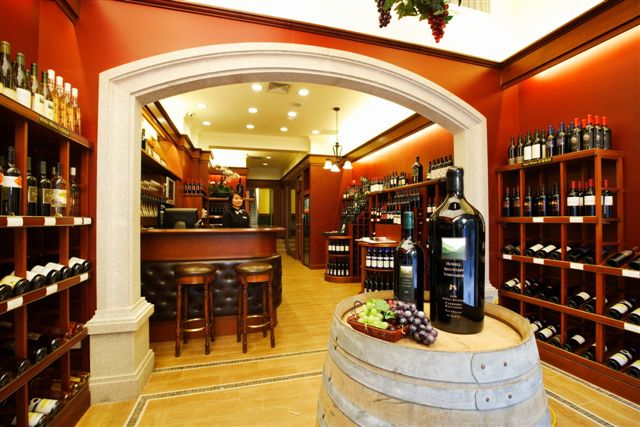By Jim Boyce
Last month, Shanghai-based Rutherford Bench celebrated its first year of business. I talked to deputy general manager Zeon Chow about the rationale behind opening a company focused on Napa Valley in a market led by French and Australian wines, the reaction of consumers to these typically fruit-forward wines, the lessons learned over the past 12 months, and more.
–
I think some people were surprised when Rutherford Bench and its retail shop Napa Reserve opened given its focus on Napa Valley, a single region in a country that doesn’t rank in the top three exporters of wine to China. What factors convinced Rutherford Bench to open in China and, specifically, in Shanghai?
Our position has always been that we concentrate on wines from the Napa Valley as they are the ones we know best and are most passionate about. While we certainly appreciate wines from other regions and countries – both Old World and New World – there are already several capable and reputable importers bringing those in. However, no other company offers the breadth of fine wines from California that we do.
 It is not only a matter of taste. As residents of Napa Valley and makers of our own wine (Howell Mountain Vineyards), my family has developed relationships with other vintners in Napa who we consider both neighbors and friends. You may have noticed that most of the 60 wineries we represent are small, family-owned producers. Whereas these wineries may not have been able to sell and market their wines in China individually given their small size, for us to come together and collectively represent the best of Napa Valley in China makes a lot more sense.
It is not only a matter of taste. As residents of Napa Valley and makers of our own wine (Howell Mountain Vineyards), my family has developed relationships with other vintners in Napa who we consider both neighbors and friends. You may have noticed that most of the 60 wineries we represent are small, family-owned producers. Whereas these wineries may not have been able to sell and market their wines in China individually given their small size, for us to come together and collectively represent the best of Napa Valley in China makes a lot more sense.
We understand that ours is a niche market, but there is a sizable and growing client base that appreciates these wines. True, the U.S. may not rank in the top three countries in terms of exporting wine to China, but we feel the China market is still young and open enough that we can effectively change people’s perceptions by showing consumers here that California wines – from the Napa Valley in particular – are equal to those from any part of the world. As for why we chose Shanghai as a base, it is China’s industrial, financial, and commercial center, as well as its most cosmopolitan city. What better place to start than Shanghai?
–
The company carries wine from more than 50 Napa Valley wineries. How are those wines selected?
We have attempted to gather a cross-section that represents the diversity of wines produced in the Napa Valley – from the so-called cult wines to lesser-known, everyday drinking wines. We also tried to select producers that have signature wines indicative of their wine-making styles, so that we can show the spectrum available from Napa. For instance, we carry the Rombauer Chardonnay, which is the quintessential modern-day, oaky California Chardonnay. But we also carry Chardonnay from Chateau Montelena and Grgich Hills, which are made in a more classic, Burgundian style. Going forward, our goal is to introduce consumers in China to wines that are not even commonly found in the U.S.
–
 Napa is famous for its “fruit bombs.” How do novice and veteran Chinese wine consumers respond to the wines you carry?
Napa is famous for its “fruit bombs.” How do novice and veteran Chinese wine consumers respond to the wines you carry?
It is true that the Napa Valley is best known for its big, bold, and opulent style of wine-making, but we believe there has been some pullback as far as the “fruit bomb” style in recent times. There are a growing number of producers and wine-makers who are returning to the balanced style of wine-making that California showed to the wine world in the Judgment of Paris of 1976.
That being said, we do realize that the perception of Napa wines is that they are more fruit forward than others. The majority of our wines are friendly and approachable wines that do not require long cellaring to be enjoyed. In that respect, our wines have been very well-received by local consumers.
–
French and Australian wines have outperformed their American counterparts in China. Why did this happen and what is needed to raise the American profile?
A lot of this has to do with timing, perception, and pricing. Whereas there has not been a sustained effort to market U.S. wines until the last decade, France has been exporting wines to China since the early 1980s. The French have been particularly adept at branding, to the point that many wine drinkers in China – both novice and experienced – believe French wines are synonymous with quality and prestige.
Don’t get me wrong; there are some amazing, high-caliber French wines in the China marketplace, but there is also a glut of inferior wines. With more people drinking wine every day, the market is still flexible, and we have time to change the perception of French wine as the be-all end-all of quality. Our wines should be just as acceptable to Chinese palates.
Australian wines, on the other hand, seem to compete in the China market due to their lower prices. There is no question that wines from Napa Valley are generally more expensive compared to their New World counterparts. But with our wines, we are bringing the best that California has to offer, and we believe that consumers will pay a premium to have more interesting wines.
The only way to improve the standing of Napa wines in China is to get people to try them, to increase visibility, and to educate consumers on the nuances of Napa Valley wine. It is a long process, but we plan on being in China for the long haul. Our goal is to first build a reputation and eventually a legacy for California wines.
–
Rutherford Bench celebrated its first year of business last month. What have been the highlights and the lessons learned?
The first twelve months have seemingly gone by in a blink. I would say the most rewarding part of our new venture has been meeting new friends and new customers with whom we have been able to share our wines. Some of our most enjoyable moments have been at wine-maker dinners, which we have organized for visiting wineries such as Staglin Family, Grgich Hills and HALL, as it allows customers to interact directly with the people involved with making the wine. It is also gratifying to see our wines enjoyed by customers at restaurants, not only in Shanghai, but also in Beijing, Suzhou, and other places.
Regarding the second part of your question, doing business in China is a never-ending learning process, with each day bringing a new lesson. We realized early on that the wine business here is a lot different from in the United States, both when it comes to serving individual consumers and to meeting the requirements of wholesale customers.
Things are rarely black and white, and one needs to remain flexible. Additionally, it is important to have confidence in your product and to be able to effectively communicate your enthusiasm to others. Wines are supposed to be special in that they create happiness, and should be treated as such.
–
When your tastes venture beyond Napa Valley, what are some of your favorite wines?
Although my family is partial to Napa Valley wines, we each have our individual favorites from different regions of the wine world. My father is a fan of right bank Bordeaux wines and Brunellos, and has recently been getting into Argentina Malbecs. My brother is into both red and white Burgundies, as well as Spanish varietals such as Albarino and Verdejo. Our tastes often overlap as we frequently share wine together, and we all love grower-produced Champagnes. Some of my favorite wines include Oregon Pinots and certain Australian Shiraz.
Grape Wall has no sponsors of advertisers: if you find the content and projects like World Marselan Day worthwhile, please help cover the costs via PayPal, WeChat or Alipay.
Sign up for the free Grape Wall newsletter here. Follow Grape Wall on LinkedIn, Instagram, Facebook and Twitter. And contact Grape Wall via grapewallofchina (at) gmail.com.


Leave a Reply
You must be logged in to post a comment.